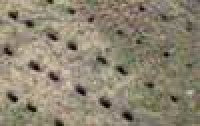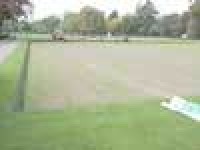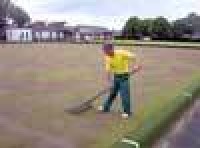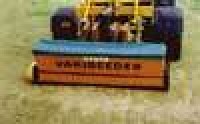Autumn Renovations as summer ends
Autumn Renovations
By Laurence Gale MSc
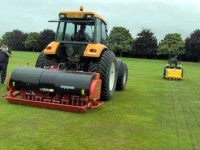
The season's play is coming to an end on some summer sports, particularly cricket, bowls and tennis. September is the ideal month to undertake and start autumn renovations.
Autumn renovation is vital in providing a good playing surface for next season. Failure to complete autumn renovations or undertake vital repairs will only result in further deterioration of playing surfaces. It is also imperative to complete the works quickly to make good use of warm soil temperatures that will aid seed germination.
Autumn renovation involves a series of operations and inputs that are initiated in sequence and complement one another. The success of any renovations is dependant on a number of factors:-
-
The current state of the sward and soil profile will determine and prioritise the extent and nature of the renovation works required.
-
Groundsman/Greenkeeper's knowledge and experience.
-
Resources available - machinery, staff.
-
Water resources.
-
Availability of materials and products.
-
Availability of specialist services - contractors, consultants.
-
Planning and time - the window of opportunity.
-
Costs/Budgets.
Planning and preparation are key elements towards achieving your objectives. In most cases the level of inputs required for your autumn maintenance will be dictated by how well your facility played/performed and recovered during the season.
It is important to order your materials early, ensuring they are available and arrive in time for your planned renovations. I have seen many instances when contractors have arrived to carry out their specialist works and the materials have not arrived on site. Order early, ensure you have given suppliers the right delivery address and you have the appropriate access available for the delivery of these materials. Ensure they are stored safely on site.
The objectives of end of season renovations are:
-
To repair worn areas.
-
To prevent a build up of thatch layers (scarification).
-
To restore surface levels (top dressing).
-
To alleviate compaction (aeration).
-
To re-establish sward densities (overseeding).
-
Application of pre seeding/autumn fertilisers to promote sward establishment.
Autumn Renovations
The following activities are generally implemented during autumn renovations and usually carried out in the following order when conditions allow. The sequence of operations and their intensity will vary according to the condition of the facility at the end of the season. The sequence of renovation activities are what are usually carried out on a bowling green, however the principles are the same for all natural turf surfaces.
|
|
Mowing the sward, preparing surfaces for renovation. Lower cutting height to about 3-4mm to clean and prepare green for renovation operations. The mower can then be used to clean up the green after scarifying has been completed.
|
|
|
Scarification, removal of unwanted debris (collect and disposal of arisings). Depending on the severity of the thatch, you may need to scarify several times in different directions. However, in most cases, if regular verticutting/grooming has taken place during the growing season you would probably only be required to scarify in two directions. Depth of scarification between 4-15mm depending on depth of thatch to remove. |
|
|
Aerate to relieve compaction and encourage root development. Aeration, decompaction of soil, improving air and gas exchange in the soil profile. Depending on the turf's condition, you can choose to carry out hollow or solid tine spiking. Hollow tines are generally used on a bi annual basis or when you have a severe thatch problem. Hollow tines depth is usually between 75-100mm, Solid tine spiking between 150-200mm depths for effective aeration. |
|
|
Top dressing, restores levels and improves surface drainage. Ensure you use compatible top dressing materials, sands, sand/soil mixes. Spreading of the materials can be achieved by several methods, utilising pedestrian or ride on disc or drop action top spreaders, or by hand using a shovel and a barrow. Best carried out in dry weather. It is important that the top dressings are spread uniformly. |
|
|
Brushing to incorporate dressings and to help the grass stand back up. Brushing in with a lute or drag brush/mat to restore levels. |
|
|
Overseeding, restores grass populations. Important to ensure a good groove or hole is made to receive the seed; good seed soil contact is essential for germination. Good moisture and soil temperatures will see the seed germinate between 7-14 days. |
|
|
Fertilising, provides nutrients for grass growth. Apply a low N nitrogen fertiliser product, something like a Autumn Fertiliser NPK 5 :5 :15 or a 15:0: 5 to help the sward through the autumn period. |
|
|
Watering / Irrigation. It is essential to keep the sward watered after renovations to ensure your seed germinates.
|
Further information on renovation techniques and equipment can be seen on the following link Renovation.



